Successful Long March 5 launch paves way for new Chinese space missions – Spaceflight Now
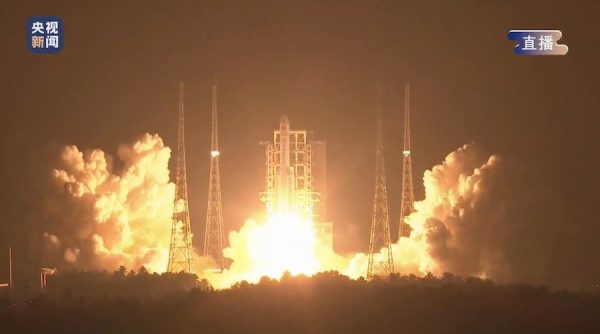
The third launch of China’s heavy-lift Long March 5 rocket successfully delivered its satellite payload to orbit Friday, validating engine design changes after a failure on the Long March 5’s second flight, and clearing the way for the launch of a Chinese Mars rover and lunar sample return mission in 2020.
The 187-foot-tall (57-meter) rocket, the most powerful in China’s fleet, lifted off from the Wenchang Satellite Launch Center on Hainan Island in southern China at 1245 GMT (7:45 a.m. EST; 8:45 p.m. Beijing time) Friday.
A live video stream on Chinese state television showed the Long March 5 rocket firing into cloudy skies over the coastal launch base in China’s southernmost province.
Ten engines powered the Long March 5 into the sky with nearly 2.4 million pounds of thrust, carrying an experimental communications satellite named Shijian 20 into space.
The launch Friday marked the first flight of a Long March 5 rocket since the launcher’s second mission in July 2017 ended in failure, prompting a two-and-a-half-year grounding and redesign effort.
The successful return-to-flight of the Long March 5 rocket Friday paves the way for China to move forward with plans to launch a pair of ambitious robotic deep space missions using Long March 5 rockets in 2020.
Watch a video replay of today’s Long March 5 launch from Hainan Island: https://t.co/nZTehqozYO pic.twitter.com/Ie6KQYBeCo
— Spaceflight Now (@SpaceflightNow) December 27, 2019
China’s first Mars rover is scheduled for launch on a Long March 5 in mid-2020, and the Chinese Chang’e 5 lunar sample return mission will also require the Long March 5’s lift capability to depart Earth and head for the moon.
Friday’s mission was critical for the Mars and moon missions to launch on their current schedules.
The launch of Chang’e 5 has already been delayed due to the grounding of the Long March 5 after the 2017 failure. China’s Mars mission must launch during a several-week-long period in mid-2020, or else wait until 2022, when Earth and Mars are in the proper positions again to make a direct interplanetary journey possible.
A future variant of the Long March 5 rocket will also launch modules of China’s planned human-rated space station, scheduled to be completed in 2022, adding another layer of importance to Friday’s test launch. The Long March 5B configuration, which is tailored for space station module launches, could debut some time in the second half of 2020 carrying a prototype of China’s next-generation human-rated spaceship on an unpiloted demonstration flight.
The Long March 5 is the heaviest rocket in China’s fleet, and one of the most powerful launcher’s in the world. The Long March 5 can deliver up to 14 metric tons — nearly 31,000 pounds — to geostationary transfer orbit, a popular target orbit for large communications satellites.
The launcher’s lift capability to low Earth orbit is around 55,000 pounds, or 25 metric tons.
Chinese teams loaded the Long March 5 rocket at the Wenchang space base with liquid hydrogen, kerosene and liquid oxygen propellants ahead of the launcher’s blastoff Friday.
Gantry arms on the Long March 5’s 300-foot-tall (92-meter) launch pad tower opened in the final phase of the countdown, and a member of the Chinese launch team crisply called out the final seconds before liftoff.
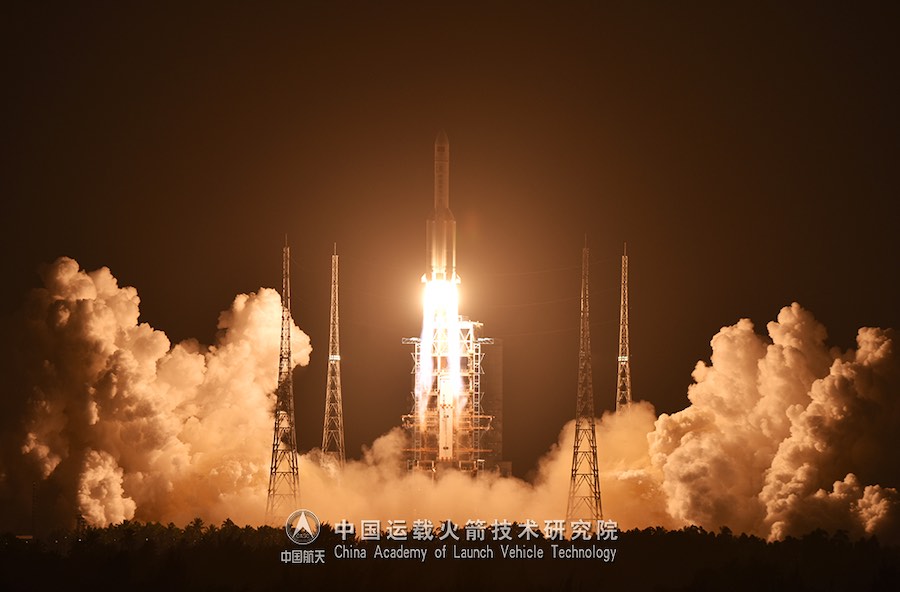
Sparklers fired underneath the Long March 5 moments before ignition of the core stage’s twin YF-77 hydrogen-fueled engines. Moments later, eight kerosene-fed YF-100 engines ignited on the Long March 5 rocket’s four strap-on boosters to propel the launcher off the pad.
After ascending through clouds, the Long March 5 arced toward the east from the Wenchang launch base. Cameras mounted on-board the rocket showed the four liquid-fueled boosters shutting down their engines and jettisoning to fall into the South China Sea some three minutes into the mission.
The two YF-77 engines on the Long March 5’s core stage burned their supply super-cold liquid hydrogen and liquid oxygen propellants for nearly eight minutes. During the first stage burn, the Long March 5 released its clamshell-like payload fairing once the launcher climbed above the thick, lower layers of the atmosphere.
Two restartable hydrogen-fueled YF-75D engines driving the Long March 5’s second stage fired next in the launch sequence.
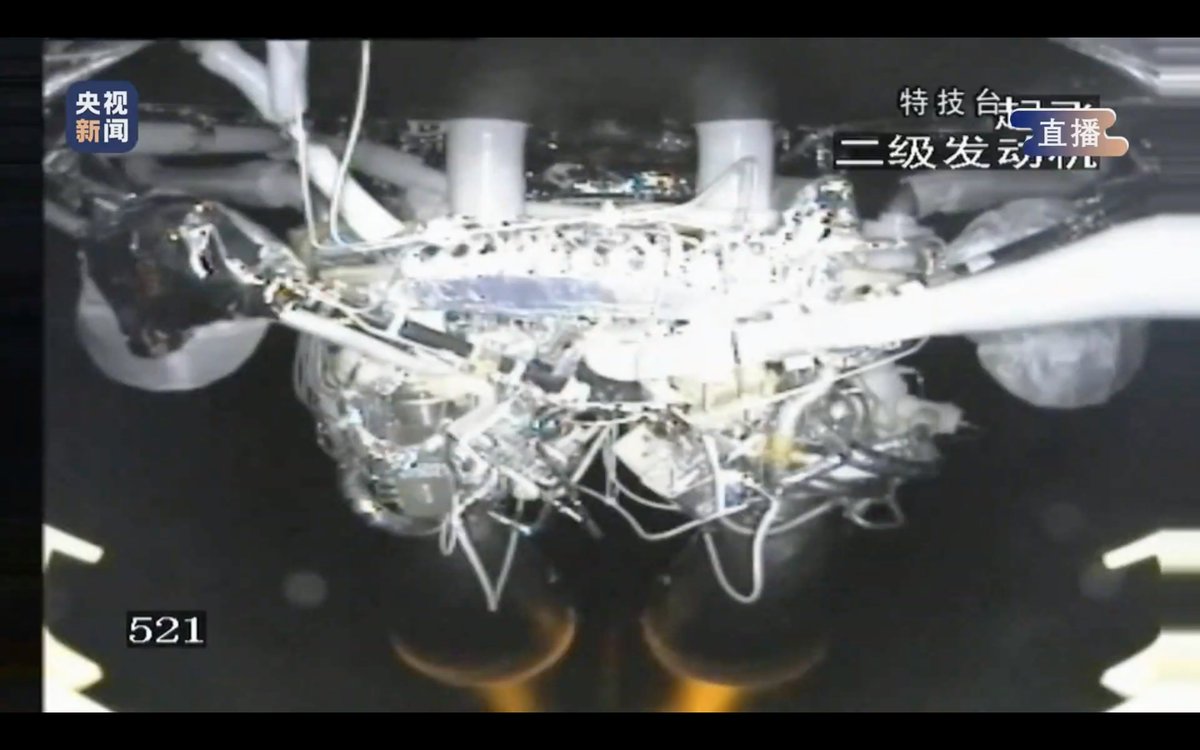
The second stage engines performed two firings before deploying the Shijian 20 communications satellite into an elliptical, or egg-shaped, transfer orbit stretching more than 42,000 miles (about 68,000 kilometers) from Earth at its most distant point.
A forward-facing camera on the Long March 5’s second stage showed the Shijian 20 spacecraft separating from the rocket, prompting applause in the launch control center.
The Shijian 20 spacecraft will use its own propulsion system to circularize its orbit at geostationary altitude more than 22,000 miles (nearly 36,000 kilometers) over the equator.
China’s third Long March 5 launch followed the same profile that engineers planned for the second Long March 5 flight in July 2017.
But a first stage engine failure on that mission prevented the rocket from reaching orbit, destroying the Shijian 18 communications satellite. China declared the first Long March 5 launch in November 2016 a success, despite a rocket problem that forced the Long March 5’s Yuanzheng upper stage to burn longer to place the Shijian 17 technology demonstration satellite into its planned orbit.
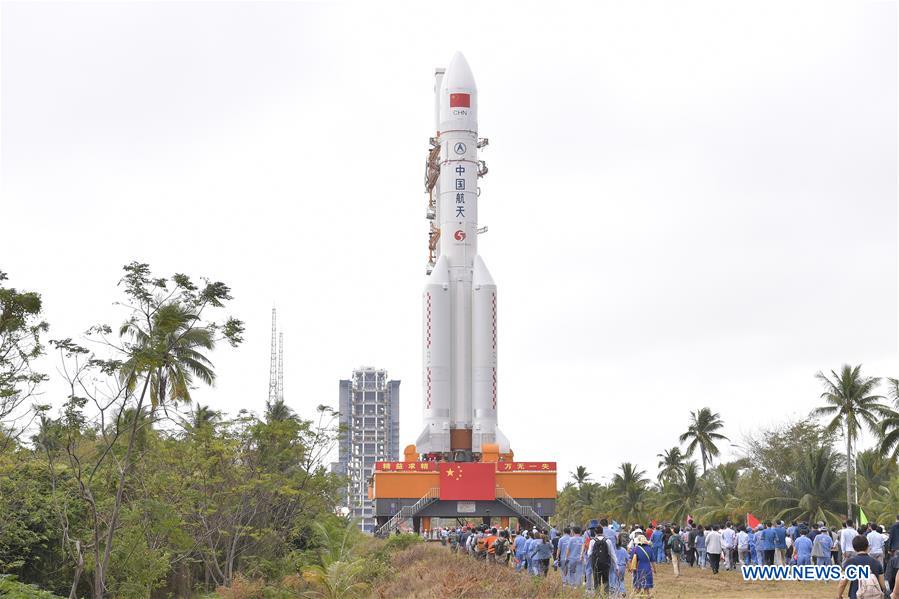
Investigators traced the cause of the July 2017 launch failure to a turbopump on one of the Long March 5’s two YF-77 first stage engines.
The YF-77 engine failure occurred in a “complex thermal environment” around six minutes after liftoff, leading to an instantaneous loss of thrust, according to Chinese investigators. Engineers redesigned the engine turbine exhaust structure for future Long March 5 missions, forcing officials to scrap engine parts already in stock.
The changes led to a gap of more than two years between the second and third Long March 5 flights. In the interim between launches, engineers conducted test-firings of the modified YF-77 engine to verify the design changes, according to the State Administration for Science, Technology and Industry for National Defense, or SASTIND, the Chinese government agency that oversees the country’s space activities.
The YF-77 engines were developed specifically for the Long March 5.
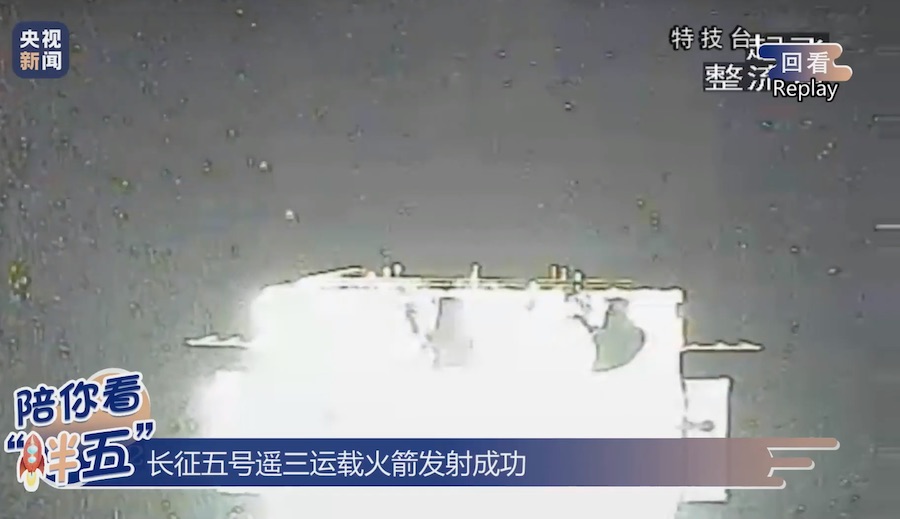
In addition to introducing changes to resolve the YF-77 engine problem, Chinese engineers simplified some structures on the Long March 5 rocket to make it lighter, increasing the launcher’s carrying capacity, according to the China Academy of Launch Vehicle Technology, the country’s lead state-owned contractor for the Long March rocket family.
The Shijian 20 satellite launched Friday will replace the Shijian 18 satellite lost on the Long March 5 failure in 2017.
Based on the new DFH-5 satellite design developed by the China Academy of Space Technology — a state-owned satellite manufacture — the Shijian 20 spacecraft will test new technologies to support higher-throughput data links with users on the ground.
Shijian 18 was also intended to test new higher-power ion thrusters. Shijian 20 may carry similar propulsion technology.
Email the author.
Follow Stephen Clark on Twitter: @StephenClark1.






